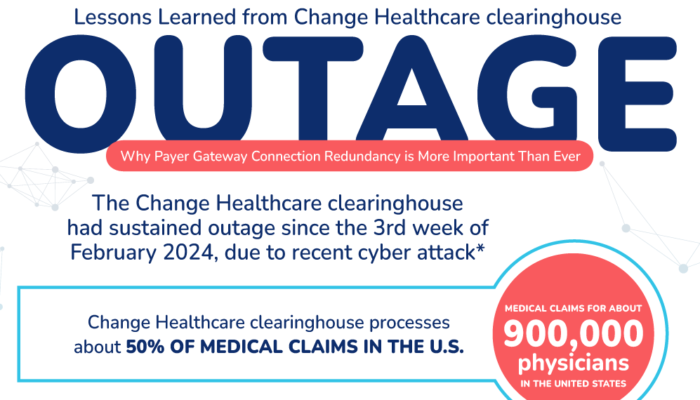The Change Healthcare clearinghouse has been undergoing an outage since a cyber attack during the third week of February 2024. This is a big deal, as the Change Healthcare clearinghouse processes roughly 50% of medical claims in the United States, which equates to medical claims for about 900,000 physicians.
More broadly, clearinghouses are platforms that allow for data transfer between providers and players. Healthcare providers are paid through clearinghouses, making clearinghouses an important part of the healthcare system.
In order to prevent outages, clearinghouses should focus on redundancy and decentralization. One way to achieve this is building payer connection redundancy. This involves establishing connections between multiple clearinghouses, allowing for backup systems. By having multiple clearinghouses in communication, payer redundancy systems avoid relying on a single clearinghouse to process transactions.
Redundant payer systems also rely on modern architecture and must be highly scalable. This allows for more flexibility and efficiency. Orbit Healthcare is a company that utilizes these tools, connecting clearinghouses with the help of modern architecture and scalability. With redundant systems, payer requests can go through even if a clearinghouse has an outage.
Cyber attacks and outages pose a huge risk to the healthcare system, and finding ways to mitigate these risks is vital. Payer connection redundancy is one way to do this, linking clearinghouses to ensure backup systems. Focusing on backup plans is important, and should be a consideration moving forward.

Source: Orbit Healthcare
